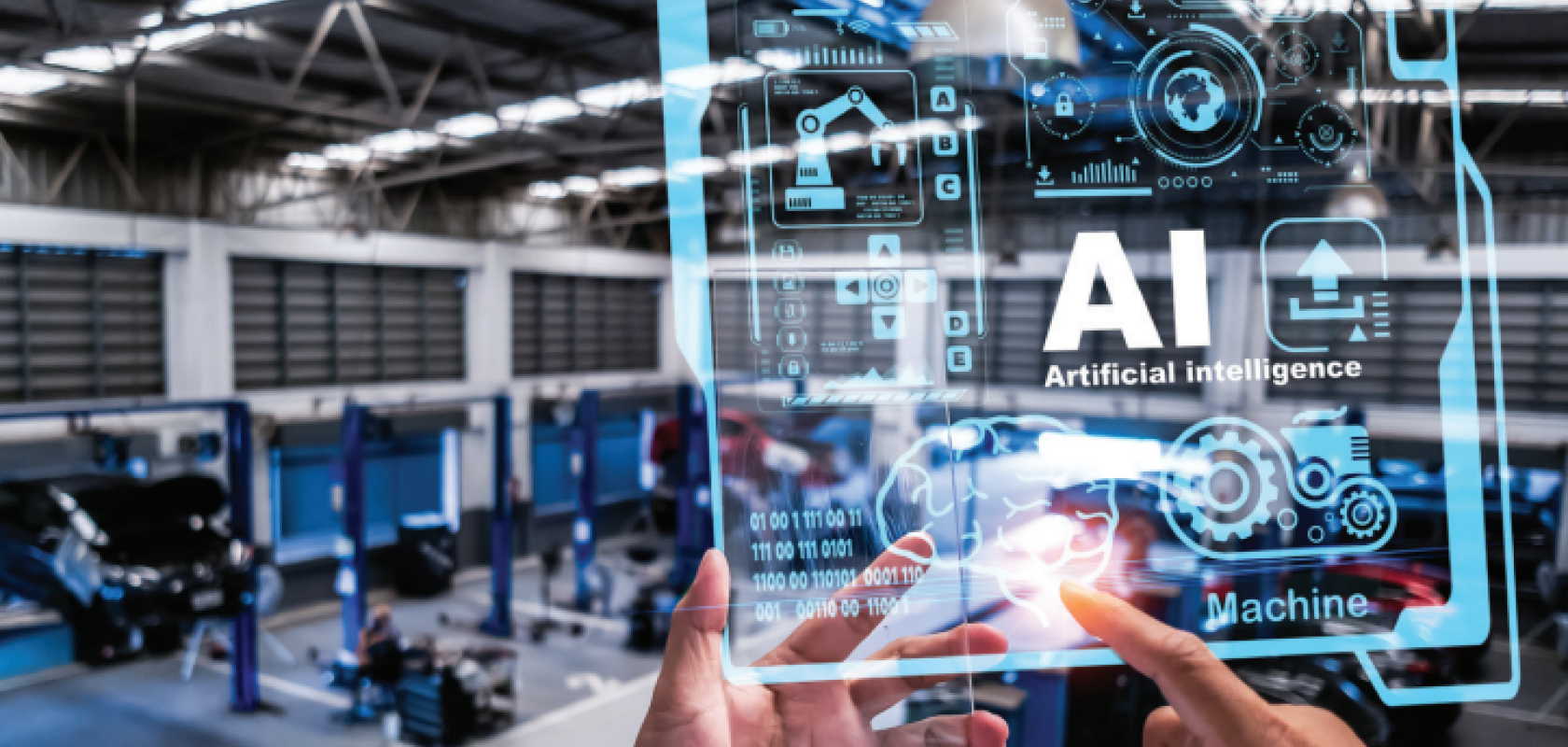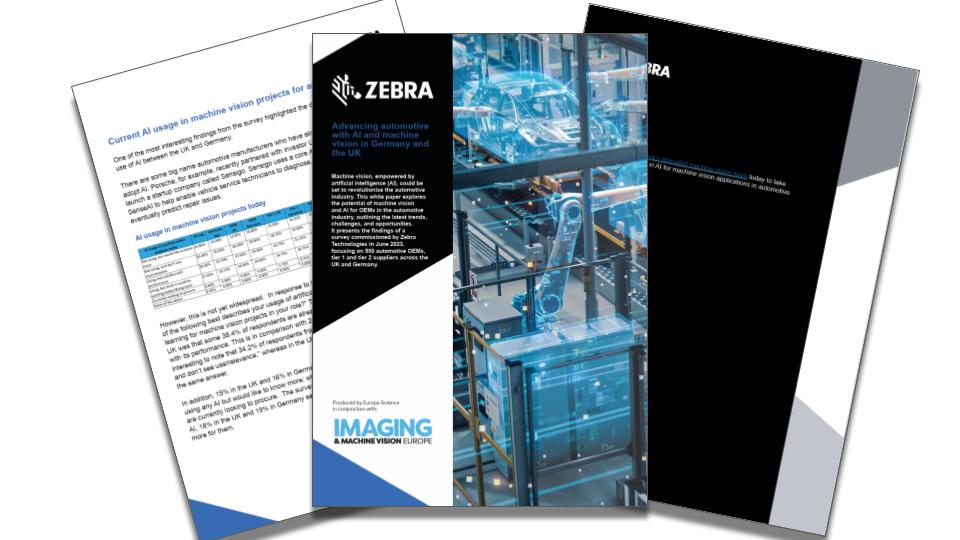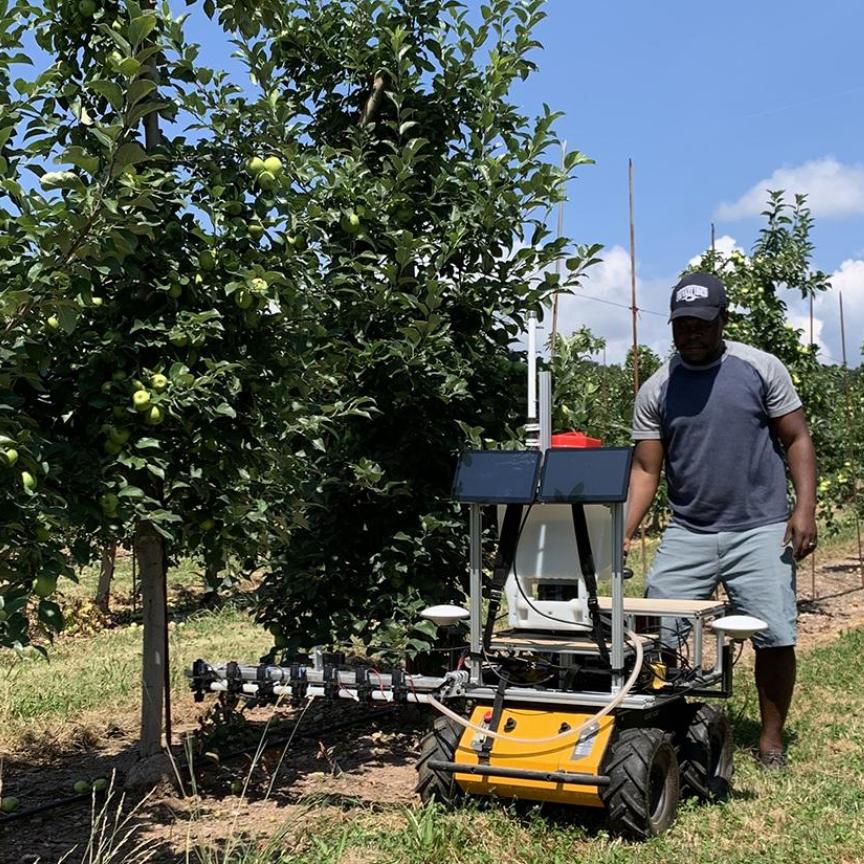Artificial Intelligence (AI) is becoming an integral feature of standard machine vision systems, delivering improved quality, greater reliability, increased safety and cost effectiveness – factors that are critical to the success of the automotive industry.
This is against a backdrop of significant industry challenges, largely caused by increased demand, and exacerbated by difficulties, particularly in supply chains. Even as we move forward from the impact of Covid-19, these supply chains are not as stable as they used to be. Disruptions such as the Suez Canal incident have led to a reevaluation of manufacturing practices. This, in turn, has given rise to trends including nearshoring, where production is moved closer to the markets. Alternatively, retrofitting existing installations is being increasingly used as a more cost-effective alternative to building new factories.
To speed up these processes, automotive original equipment manufacturers (OEMs) can turn to the latest technology, specifically machine vision combined with AI. This combination is gaining adoption, but there's still a way to go. The challenge now is the sheer volume of data generated by these processes, leading to questions about how to handle this data and be prepared for increasing competition, especially from companies in different regions. Machine vision combined with AI is becoming critical in understanding and combating these challenges.
AI and machine vision in the UK and Germany
In the UK and Germany, automotive OEMs and their suppliers are currently predominantly using machine vision for quality and end of line detection, alongside other traceability and measurement tasks. This is according to new research commissioned by Zebra Technologies and carried out by research firm, Censuswide, which interviewed 500 VPs, directors, and heads at machine vision users across different levels in the UK and Germany.
A particularly interesting finding surrounded the incorporation of AI with machine vision. Stephan Pottel EMEA Practice Lead – Manufacturing, Transportation & Logistics at Zebra Technologies explained at a recent webcast in association with Imaging and Machine Vision Europe: “When we asked a little more in detail about plans to implement AI combined with machine machine vision, this is where you see a lot of the a lot of differences between the two markets.”
Amongst these differences, some 56% of UK respondents said that they are currently using some form of AI in their machine vision projects, while 43% of German respondents answered the same. One of the biggest and somewhat surprising discrepancies came when asked the current level of AI usage for machine vision projects. In the UK, 38% of respondents selected the option “I am using and satisfied with performance” whereas in Germany 34% of respondents selected “not using, and don't see use/relevance” (compared with 24% in the UK).
Given that the automotive industry has been known to be an early adopter of new technologies, and Germany as a user of leading practices and procedures, it begs the question, why the reluctance when it comes to AI in machine vision? Interestingly, a global State of AI report from Deloitte looking at the adoption of AI in Germany across a number of industries, reached a similar conclusion. Amongst the reasons cited for this, the report says German respondents reported challenges as more complex than their global counterparts. These challenges include managing AI-related risks; proving the business value and choosing the right AI technologies.
Zebra’s study also highlighted that there is still a way to go in both markets before the potential of AI can be fully realised. Said Pottel: “We have 40-60% that are not using AI yet, and only a third of these companies are planning to use it. That means there are a lot of companies that have no vision at the moment as to how they can increasingly use AI in combination with or in the area of machine vision.”
The complexity challenge of incorporating AI
At the same time, there is also a feeling of pressure to improve processes in order to keep up with competition and meet business objectives, and the reluctance to move forward with AI and machine vision can be at least partially attributed to the levels of complexity of projects that may benefit from it. Pottel explained: “Companies are mainly focusing on very complex projects where it can take a really long time to implement tools such as AI. However, there are new technologies in the field which can make it easier to implement these tools, potentially doing smaller steps to drive adoption of machine machine vision and artificial intelligence.”
One such technology is the latest generation of optical character recognition (OCR) tools. Historically used for automotive tasks such as licence plate recognition, the very latest OCR is equipped with deep learning, which uses a neural network that mimics the human brain to deliver very high accuracy. This has the dual benefit of helping to overcome some of the challenges associated with traditional OCR, such as training time, stability and complexity, and also providing a quick win when it comes to the adoption of AI. Speaking at the webcast, Allan Anderson, Managing Director at ClearView Imaging and Chairman of UKIVA said: “Deep learning OCR can be a really good entry point for anyone wanting to deploy AI online. If, as the figures suggest, people are not having much success in actually deploying AI, it could be because they're trying to kind of tackle the kind of complex problems which, in time, can be solved. But if they have little experience with AI, it might be better to start smaller, build the knowledge and then go on from there.”
This technology is particularly useful for the more challenging tasks, including reading damaged or blurred text, or dealing with changing lighting conditions and complex backgrounds. It can also deal with reflective surfaces such as steel or glass.
AI and OCR solutions on the market now
Zebra Technologies has just such a tool available, thanks to an innovative OCR tool integrated into its Aurora image processing software. The tool utilises deep learning for greater consistency and accuracy when imaging alphanumeric characters, and it works straight out of the box, so reduces the need for special skills or AI experience. Continued Anderson: “What users tend to find is that the ‘out of box’ experience is really good. Initially, in a quick stick with a VIN plate application, it would have taken weeks of setup in a lab with conventional tools just to be able to validate with that work, then trials on the line and trying to get things working and maybe not succeeding. If you take something like a deep learning OCR tool, pull it out of the box, grab your camera, and start pointing at text, because it's been trained on such a huge amount of images and lots of different variations, you're going to get success.”
Looking to the future, as technology emerges and more challenges are overcome with AI, it could be set to drive growth in the automotive industry, as Anne Wendel, Director Machine Vision at the VDMA Robotics + Automation Association said, rounding off the webcast. She explained that automotive is an important sector for machine vision and an early adopter of new trends, saying that AI software is expected to become a standard component of MV solutions. “Years ago, AI was a technical curiosity and today AI based solutions can be seen everywhere, from our smartphones, banks, shops, production facilities, logistics centres, AI comes into play and we all use it. Now, deep learning AI is revolutionising machine vision and some say, reinventing the art of what is possible.”
Wendel highlighted some of the VDMA’s research, monitoring AI in machine vision over the years. She said: “In 2019 many survey participants stated that AI-based solutions had not yet provided acceptance. Looking at the most recent English market survey in 2023, more than hundreds mentioned AI as a driver of current and future machine vision. And moreover, there is a free text field where the European machine machine industry can include free text. These answers reported demand for AI-based machine vision solutions, and also noted that software-considered-as AI will become a standard crucial part of machine vision systems.”



